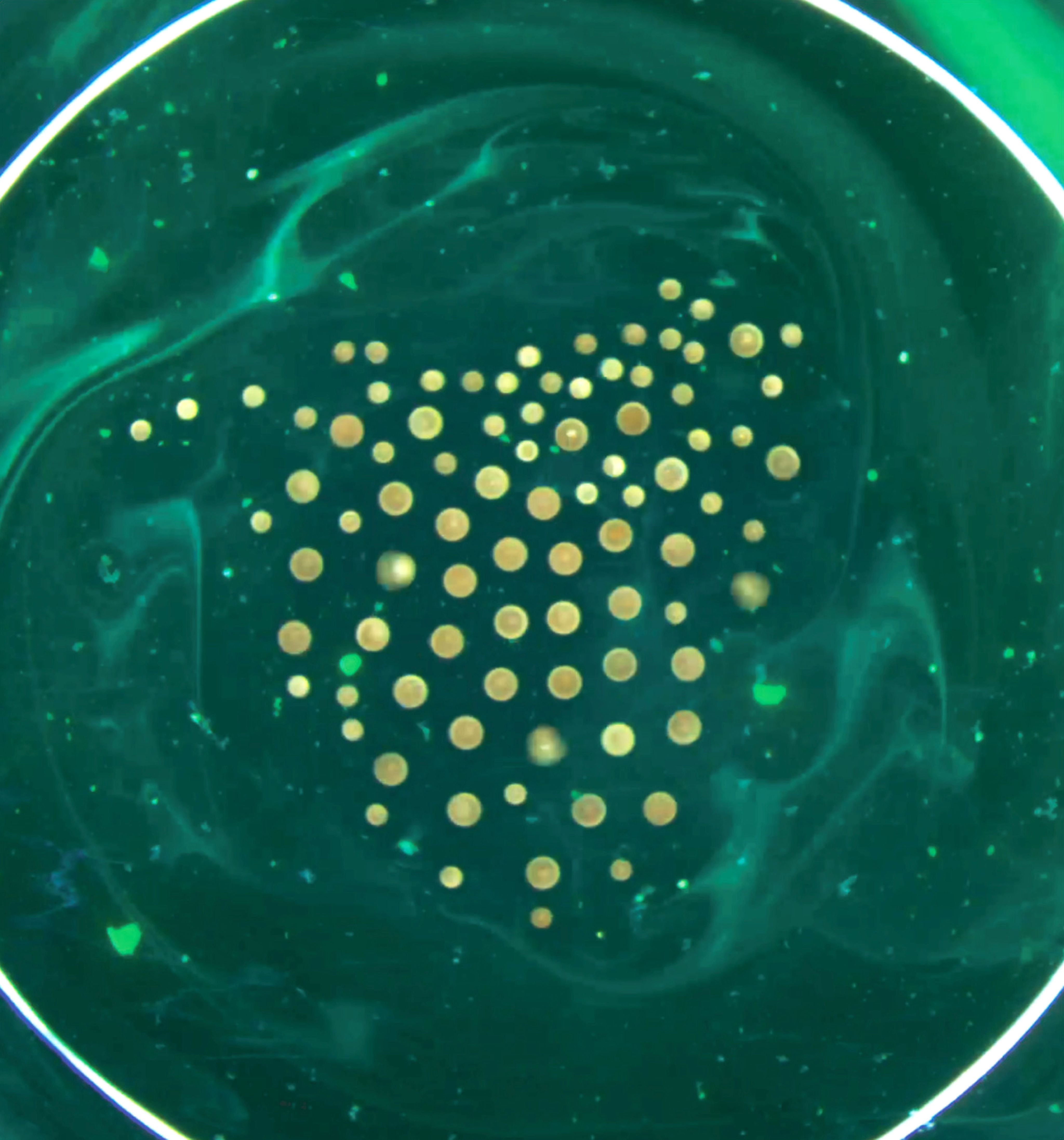Incredible view of the Milky Way and more — June’s best science images
The month’s sharpest science shots — selected by Nature’s photo team.

Star-studded sky. This spellbinding sight, captured by photographer Stefan Liebermann, shows the Milky Way arch over baobab trees in Madagascar. The clouds of colour are caused by airglow — the effects of processes in the atmosphere such as light-emitting chemical reactions or the recombination of charged atoms. The shot was one of 25 selected for this year’s Milky Way Photographer of the Year competition. “This photo means a lot to me, and I can’t even begin to tell you how difficult it was to take,” said Lieberman. “From the road conditions to the armed security guards protecting you while you take photos, everything about it was an adventure.”

Credit: Gaurav Gardi
Order from chaos. This intriguing image shows the pattern that formed when dozens of microscopic robots were released on to water and made to spin. The ‘microbots’ are magnetic discs a fraction of a millimetre in diameter. When made to rotate by a magnetic field, they organized themselves into a pattern with larger ones in the centre and smaller ones on the outside. Researchers showed that they could program the microbots to cluster and move. The phenomenon might one day be used to assemble microscopic structures, and to understand the process of self-organization, in which local interactions — between molecules, cells or animals, for example — lead to order in a system.

Credit: Gaurav Gardi
Credit: Gaurav Gardi
Lava landscape. One of the most closely monitored volcanoes in the world has burst into life again. This fiery image shows an aerial view of the Kīlauea volcano in Hawaii, which began erupting on 7 June 2023 and created this spectacle of glowing lava. The volcano is studded with cameras and instruments that measure ground deformation and seismic activity. In 2018, its violent eruption was studied closely by scientists.
Credit: United States Geological Survey/Anadolu Agency via Getty

Credit: ESO
Credit: ESO
Making starlight. This striking image shows four powerful lasers that form part of the Very Large Telescope in the Atacama Desert, Chile. The lasers make sodium atoms in the atmosphere glow like artificial stars, allowing the telescope to correct for atmospheric distortion of the light from real stars, and so create sharp images. The Very Large Telescope — run by the European Southern Observatory — obtained its first images 25 years ago, in May 1998, and has since been involved in key research including studies of the supermassive black hole at the centre of the Milky Way.
Lethal weapon. This 3,000-year-old bronze sword with an octagonal hilt has been unearthed during excavations in southern Germany. It comes from a grave, containing bronze artefacts, in which a man, a woman and a boy were buried in quick succession.
Archaeologists think the sword is a real weapon, not just an ornamental one, like other well-preserved Bronze Age swords found so far.
Credit: Archäologie-Büro Dr. Woidich/Sergiu Tifui

Credit: Dave Sanders/New York Times/Redux/eyevine
Credit: Dave Sanders/New York Times/Redux/eyevine
Something in the air. Smoke from wildfires raging across Canada turned skies orange across the northeastern United States, leading to the unusual and disturbing sight of New York City choked with toxic smoke. More than four million hectares of forest have already burnt across Canada this year — double the historical average and a number that is usually reached much later in the season. There is no solid explanation for the extreme fire season, but scientists say climate change is a factor in promoting extremely hot, dry and windy weather across the country.
Down to Earth. Three astronauts from China’s Shenzhou 15 mission returned to Earth after a six-month trip to the Tiangong space station. The trio touched down safely at a landing site in the Gobi Desert on 4 June. During their time in space, the crew members embarked on spacewalks and performed experiments, which included imaging an astronaut’s skin using a microscope and testing a thermoelectric converter that turns heat into electrical power.
Credit: Li Zhipeng/Xinhua/eyevine

Credit: Alexis Rosenfeld/Fondation 1 Ocean/UNESCO
Credit: Alexis Rosenfeld/Fondation 1 Ocean/UNESCO
Deep-sea refuge. This Paramuricea clavata coral was photographed during an expedition off the south coast of France called Noah’s Ark of the Depths. Last summer in the western Mediterranean, these corals — called gorgonians — suffered a massive die-off because of abnormally high temperatures. But the expedition’s findings offer some hope: gorgonians below a certain depth have survived, because their surroundings are less affected by temperature changes. Scientists have taken samples and will analyse the corals’ DNA to better understand how they relate to others in the region.
Staring into space. Researchers have released the first batch of data from a project that uses a telescope in Arizona — retrofitted with thousands of small robotic arms — to capture light spectra from 35 million galaxies. The Dark Energy Spectroscopic Instrument (DESI) aims to produce the largest-ever spectroscopic survey of galaxies and reconstruct the Universe’s history of expansion. This visualization shows DESI’s ‘one percent’ survey — a 3D map of 700,000 objects imaged from 20 directions in the sky that covers about 1% of the total area that DESI will study.
Mini lungs. In this microscopy image, SARS-CoV-2 particles (magenta) infect alveolar and airway tissues (blue) in human lung buds — tiny structures that resemble the embryonic precursors to lungs. Researchers used stem cells to construct the mini organs, which can be cultured by the thousands and used for high-throughput analyses of how lung tissue is invaded by the virus.
Credit: Laboratory of Synthetic Biology at The Rockefeller University